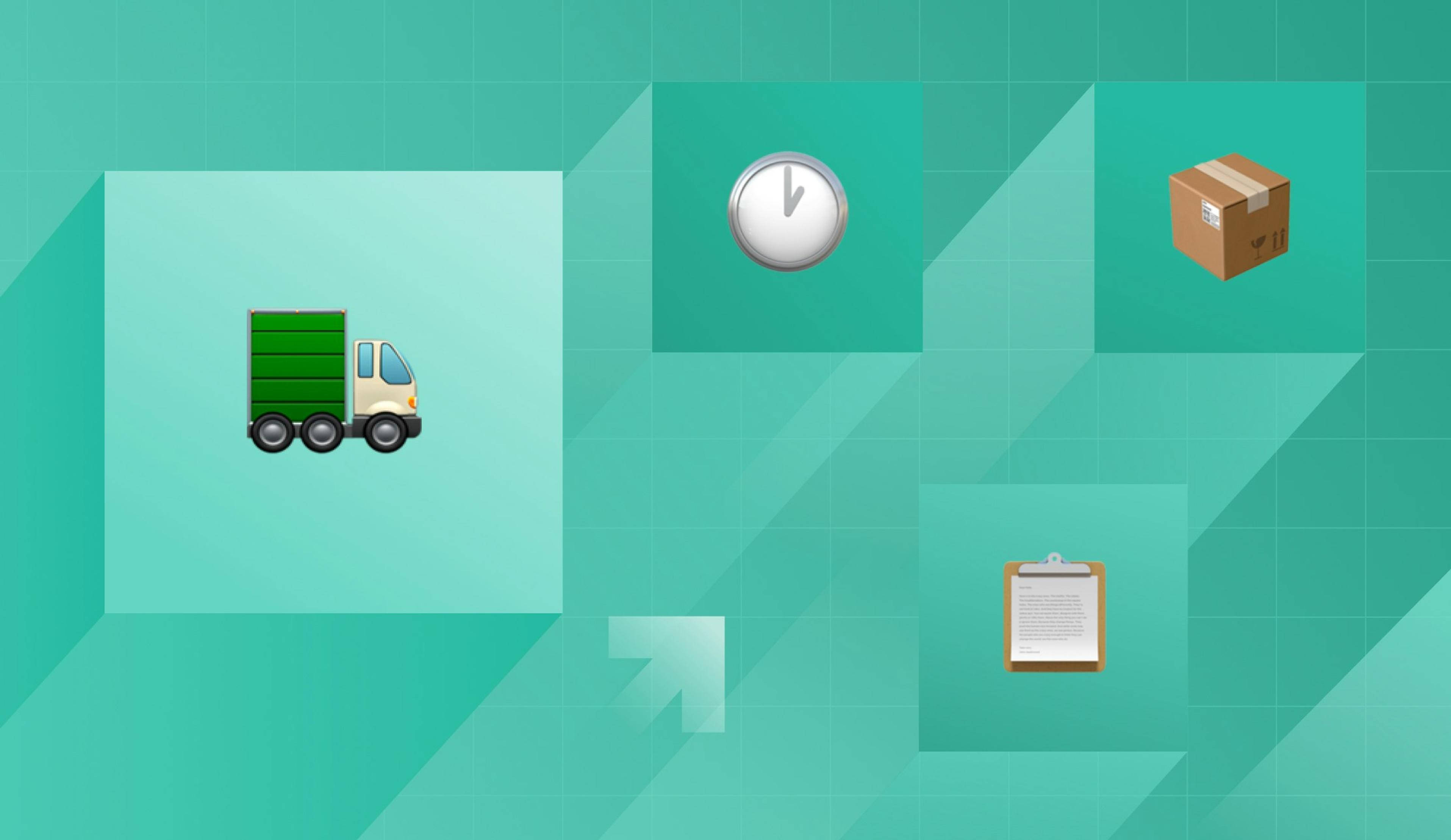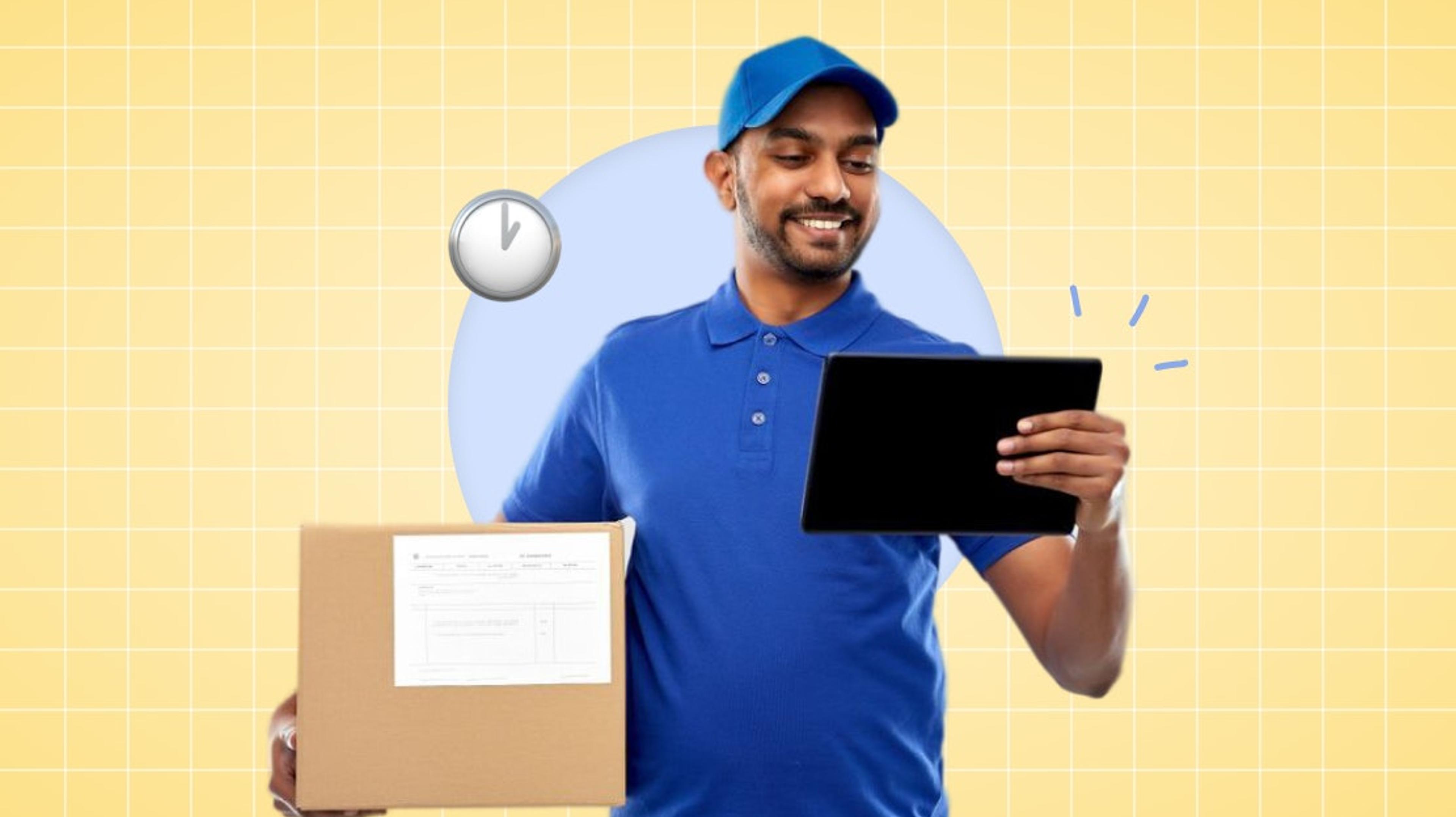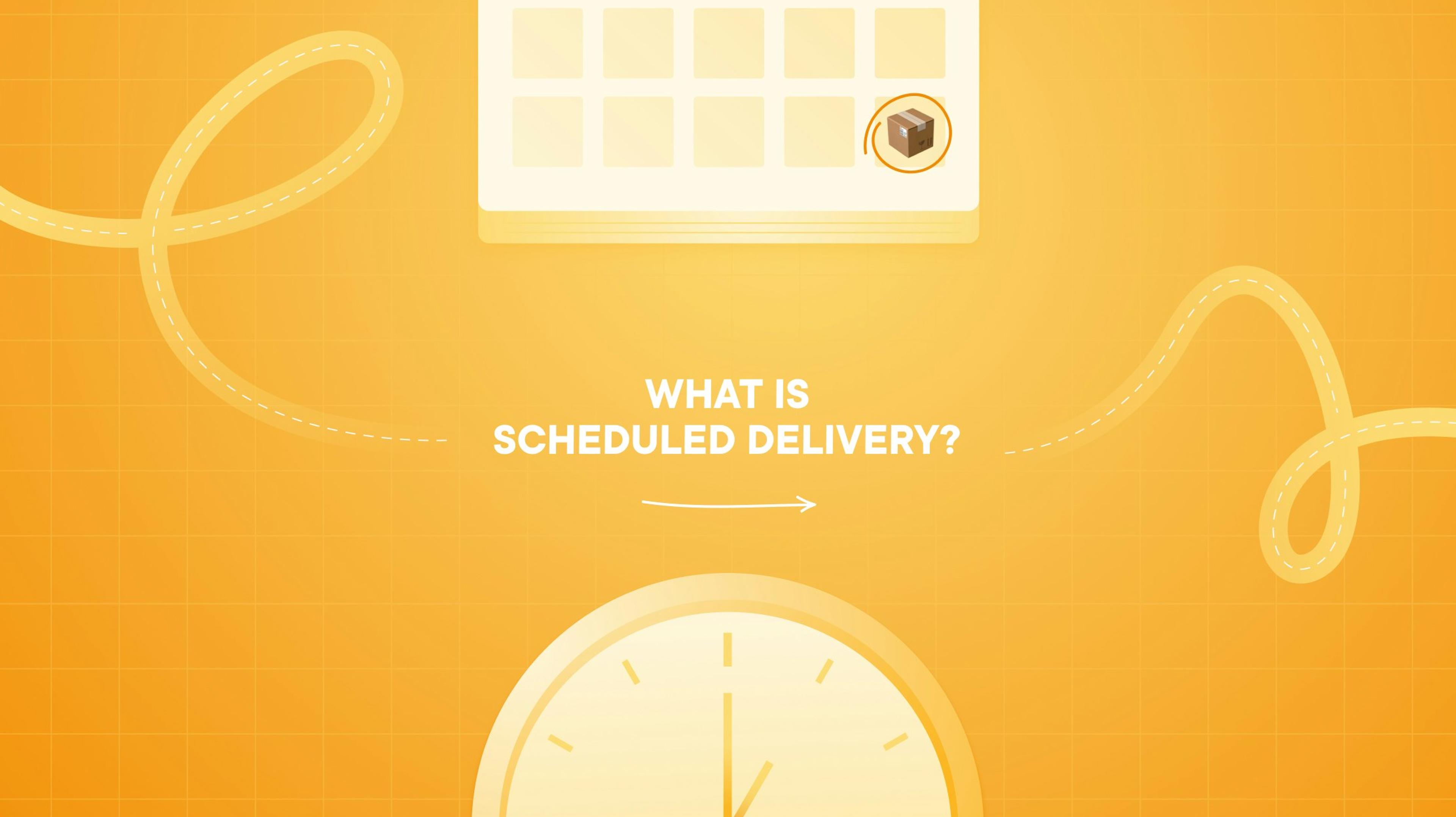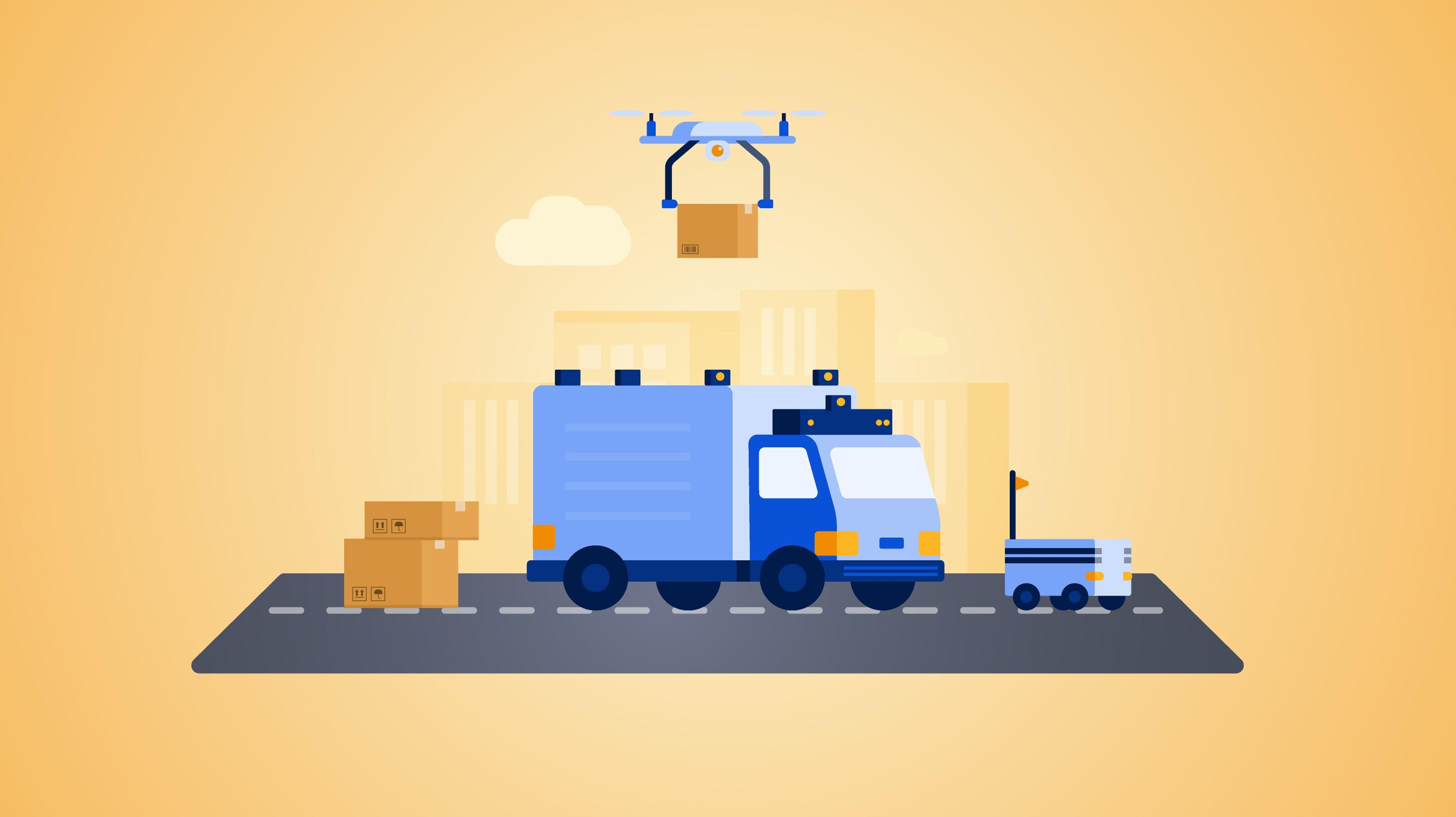What Is Logistics Management?

If you decide to handle your own logistics management, Circuit for Teams can help you get your deliveries to customers faster.
Did you know that if you run an eCommerce store — or any business that brings products to customers — you’re also a logistician?
Whenever you’re involved in the processes that bring goods to customers, you’re participating in logistics management.
But just what is logistics management?
Logistics management refers to the various processes businesses use to get goods to customers — from ordering raw goods to make products to dropping a finished product on the customer’s doorstep.
Even customer returns are part of logistics management.
Logistics management aims to get, move, and store goods — whether individual parts or finished products — in a way that cuts costs and makes the business the most money.
If you’re an eCommerce retailer managing your own logistics — or you run a shipping or delivery service — logistics management is already part of your business life.
For example, you’re doing logistics management every time you place an order to deliver new inventory to your business or assign one of your delivery drivers to deliver a customer’s package.
Read on to learn more about the key functions of logistics management and why logistics management matters for your business.
I’ll also describe the four main types of logistics management. Finally, I’ll give you some tips to help you improve your own logistics management processes.
Let’s get to it.

Types of logistics management
Logistics management refers to the many processes that go into planning, organizing, executing, and overseeing logistics — so goods reach customers in the most efficient way possible.
Those logistics management processes fall into four main categories:
Supply management
Supply management refers to the procurement, organization, and storage of materials in the logistics supply chain.
This could include raw materials for production, for example, or parts to assemble to finalize a product.
Material handling relies on inventories and production planning to make sure that the needed materials are where you need them when you need them to be there.
For example, let’s say your business sells laptop accessory sets that include a Bluetooth keyboard, Bluetooth mouse, and laptop stand.
You order these parts separately from wholesalers and combine them into packages at your business.
Materials management could mean making sure you always have enough of each component (keyboard, mouse, stand) to assemble a package.
Production
Production management refers to the process of putting together different parts to create a finished product that can go to a customer.
It might involve tracking and monitoring all the parts, materials, and packaging.
Continuing with the above example, let’s say you store the Bluetooth keyboards, mice, and laptop stands in separate warehouses.
You must move each part to a fulfillment center, where workers put them together in a single package.
The workers might also package the finished product, for example, by placing it in a branded box with your company logo on it.
Distribution
Distribution refers to the physical transportation of material goods (not the storage). This includes loading, unloading, and moving materials (like with a truck).
Continuing with the above example, let’s say you sell your laptop accessory packages (the Bluetooth keyboard, mouse, and laptop stand combo) in a physical storefront.
You have to get the packages from your warehouse to the store.
Material distribution could involve getting the completed laptop accessory combo packages to your brick-and-mortar store with a delivery truck.
Reverse logistics
Sometimes, customers aren’t happy with their product or realize they don’t want what they ordered.
When this happens, they may want to return the product. This process of moving a product from the customer back to the business is known as reverse logistics operations.
For example, let’s say you ship a laptop accessory package to a customer and they decide to return it. They need to re-package it, apply a shipping label, and pay for postage to send it back.
Alternatively, some companies offer packaging and preprinted shipping labels for customers to make the returns process easier.
You can learn more about reverse logistics from my guide on the topic.

Key functions of logistics management
The four logistics management categories I describe above cover various smaller tasks.
These smaller functions don’t always fall neatly into just one type of logistics management category.
Take a function like order processing, for example (which I’ll talk about in greater detail below).
This involves reviewing incoming customer orders, finding the product in the warehouse, packaging the item, and shipping it to the customer.
These various order processing steps can fall under production and distribution. For example, packaging the item falls under production, and shipping the item is a part of the distribution.
Plus, if the customer wants to return the order and it has to be processed for a return, order processing can also fall under reverse logistics.
Here are some more functions that make up the logistics management process. You might even already do some if you run an eCommerce shop, logistics service, or delivery business.
Sourcing and procurement
Inventory needs to come from somewhere. Businesses don’t just pull their goods out of thin air — although that would make things a whole lot easier.
Sourcing and procurement refer to the process of getting your hands on inventory. It might involve steps like:
- Finding an inventory supplier through a wholesaler on online platforms like Alibaba or AliExpress
- Requesting sample material from a supplier to test the quality
- Drawing up a purchase order agreement with the supplier, specifying exactly what you’re ordering and on what terms (like price, number of pieces, and timeline)
- Paying for and receiving the goods from the supplier
Get a full list of the steps that go into the sourcing and procurement processes.
You can also check out our post on inbound logistics.
But what if you make your own inventory instead of ordering it from other suppliers? Read my point on production planning and scheduling below.
Inventory management
Once your business receives inventory, you’ll need to organize that inventory.
Record and organize inventory so you know when you’re running low on a certain product and need to restock.
This can help you avoid stock shortages and stockouts (when a customer orders a product you don’t have on hand).
You’ll have to backorder products if this happens. Get more details on backordering and how to avoid it.
Accurate inventory management can help your business calculate your inventory turnover ratio and avoid inventory shrinkage (when the amount of inventory you’ve recorded doesn’t match up with the actual amount of inventory you have on hand).
We’ve got some tips for tracking inventory.
Production planning and scheduling
Maybe your business makes its own inventory instead of sourcing and procuring it from suppliers. For example, you might craft vases or sell clothes you sew yourself.
In this case, you must think about production planning — figuring out how much inventory to make within a set time frame to meet customers’ demands.
Depending on the type of product you offer, production planning may simply be a matter of assembly.
Maybe you have various finished parts delivered from wholesalers and assemble those parts into a finished product to sell to customers.
Combination packages are a great example of this. Let’s say you sell DIY home spa packages. You put various products — like a face mask, bubble bath, and body lotion — into one package that you sell as a single unit to a customer.
Warehouse management
You must keep all of your inventory somewhere before it’s sold. If you’re a small startup, you might stash products at home (like in a closet or the garage).
But bigger businesses often need to rent space to store their inventory. You might rent space in a shared warehouse or — as you get bigger — have your own warehouse for storage.
Warehouse operations management can help your warehouse run smoothly.
This includes tasks like finding the best warehouse layout for your needs and the optimal storage of goods (a process known as “slotting”).
We have a handy guide that explains the different types of warehouses and which might be best for your business.

Order processing
When a customer orders a product, you must fulfill that order. You might do this in-house and handle it yourself or outsource it to a third-party logistics (3PL) provider.
Order processing involves reviewing the order, picking the product (taking a product from a warehouse shelf), packaging the product, and shipping it.
Check out our post on the different types of order fulfillment so you can figure out which type might work best for you.
Last-mile delivery
Last-mile delivery refers to the process of moving the product from your warehouse to the customer.
It’s the final step in the supply chain process.
Last-mile delivery could involve assigning delivery drivers, delivering the product, and getting proof of delivery (like a customer signature).
Learn more about last-mile delivery and how you can profit from it.
Customer service
Customer service encompasses all of the interactions between your business and the consumer.
For example, a customer might call to check their order status or complain about a defective product. These interactions are also part of logistics management and can impact customer satisfaction.
For example, let’s say a customer has a question about their order status and they call your customer service phone number. If they have to wait on hold for 30 minutes, they might get frustrated.
Streamlined customer service — for example, by offering a chatbot or frequently asked question (FAQ) section as the first point of contact — can prevent complaints.
The importance of logistics management
As you can see from the above list, effective logistics management involves a lot of work.
On top of all that, effective logistics planning might involve coordinating the above functions with other departments — such as sales, manufacturing, and information technology.
For example, let’s say a customer wants to exchange a product for a different size.
You must log the return in your system (IT) and update the inventory management data, reflecting one product return and another product going out.
Plus, the warehouse management team has to pick and pack a new item. And finally, you have to ship it.
Another example: Let’s say you sell exercise equipment and it’s January (when a lot of people are trying to get fit for their New Year’s resolutions).
The sales team might alert logistics management that sales numbers are climbing. This way, logistics management can make sure there’s enough inventory on hand and they have the resources to process and ship increased order numbers.
There’s no doubt that logistics management is a big job.
That said, it’s definitely worth devoting some time and effort to establishing good logistics practices in your company.
Efficient logistics management can help your business by:
Enhancing efficiency
Logistics management is all about planning the movement of goods in a way that’s fast and reduces hassle.
A faster flow of goods can help with operational efficiency. For example, take a task like a customer return.
To make it faster and easier for customers to return items, you might include a prepaid shipping label with each order.
This helps you get the products back faster because the customer doesn’t have to go to the post office to get postage (most of us probably put off post office errands).
That also means you can process the customer’s return sooner (for example, by refunding their money).
Hint: Our guide to improving process efficiency can apply to many processes that fall under logistics management.
Minimizing risk
Well-organized logistics management can also help reduce business risks.
Take inventory management, for example. Having an inventory tracking system as part of your optimization strategy could mean applying barcodes to every product that comes through your business.
This way, you can scan inventory at every stage of the supply chain — from when it enters the warehouse to when your team puts it in the delivery vehicle to when it reaches the customer’s door.
This reduces the risk of lost inventory.
Lost inventory costs your company money since you’ve paid to produce or get the inventory but can’t sell it to make that money back.
Reducing operational costs
Operational costs refer to all the expenses you must pay to keep your business running, like employee salaries, commercial rent, warehousing fees, delivery vehicle maintenance, gas costs, and more.
Logistics management can help you cut these costs by improving efficiency and reducing risk.
Consider last-mile delivery as an example.
Routing software like Circuit for Teams can help drivers avoid time-wasters like traffic jams.
Our tool helps drivers avoid idling in traffic, saving time and cutting fuel costs.
This can also help reduce excess wear and tear on delivery vehicles.
Improving the customer experience
Efficient logistics don’t just benefit your business. They can also benefit your customers.
Customer service is an integral part of logistics management. For example, if customers need help, simplify the process by giving them a first line of support, like a frequently asked questions (FAQ) page and chatbot.
With these resources, there’s no need for the customer to pick up the phone and make a call (and likely wait on hold).
If the customer can’t get the answers they need from these first resources, you can then escalate their question to an actual person trained to deal with more complicated problems.
Enhancing your reputation
The points above can add up to one more big “pro” for your business: improving its reputation.
For example, improving the customer experience means you’re more likely to have happy customers.
In turn, these customers might be more likely to recommend your company to an acquaintance or leave a positive review online (like on social media).
Reviews matter: Data suggests customers use reviews for decision-making and rely on them when choosing whether to support a business.

Tips to improve your logistics management processes
Now that you know just how important logistics management is to your business, you’re probably wondering how to improve your logistics management.
Here are a few tips that can help.
Streamline communication throughout the logistics process
Communication can help avoid confusion and enhance clarity in various logistics processes.
For example, if you’re sending drivers out to deliver packages, it’s important each driver knows which packages they’re responsible for and where to take them.
This can increase accountability. If a package goes missing, you’ll know which driver was responsible for it and can follow up with them to see where the package might be.
You might want to specify what communication tools you’ll use for specific tasks.
For example, route management technology like Circuit for Teams allows you to assign drivers routes.
It also gives them all the information they need to make each delivery, including the customer’s name, address, and related information (like if a signature is needed on delivery).
Technology can also help improve communication in areas other than transportation management.
For example, you can improve inventory control with inventory tracking systems (where each piece of inventory has a scannable barcode).
You can assign the inventory a barcode and scan it when you receive it, when it’s stored in the warehouse, when it’s taken out for delivery, and when it’s dropped off with the customer.
When you have concrete data that shows where a product is at any point in the supply chain, there are no questions about who’s responsible for it at any given time.
The result? Greater clarity and simplified team communication.
Track and improve order lead times
Order lead time refers to the time it takes from when a customer places an order to when that product is delivered.
Research shows that fast delivery is important to customers, so you want to improve lead time.
Start by tracking your order-to-delivery times — recording the order date and delivery date for every order you process. The number of days between the two dates is your delivery-to-lead time.
Then, look for ways to shorten that time.
For example, let’s say you notice delivery times are lagging because of stockouts (when you don’t have enough of an inventory item on hand to fulfill a customer order and have to order more inventory).
This could mean a problem with your inventory management. It might be time to revisit your economic order quantity (EOQ).
This is your company’s ideal order quantity.
Basically, it’s the number of orders your business can fulfill while minimizing costs like inventory holding (storing products before they’re sent to customers).
Learn more about EOQ and how to calculate it.
Manage efficient inventory levels
Good logistics management isn’t just about making sure you have enough inventory. You also need to think about how you organize and manage your inventory.
For example, an ideal warehouse layout can make it easy for workers to find inventory when needed.
One popular example of warehouse management is the first in, first out (FIFO) method, where stock that sells fast is stored at the front of the warehouse — so it’s easy to access — and stock that sells more slowly is kept in the back where it’s less accessible.
Another practical tip is to maximize warehouse storage space, for example, by storing goods vertically.
By making the most of the space you already have, you’ll be less likely to need additional storage space.
Evaluate and redesign transportation processes
Transportation can be a major expense in logistics management. You must consider things like driver salaries, vehicle maintenance, and fuel.
Examine your transportation management to see where you can save.
For example, you might swap out older vehicles for more energy-efficient models to save on gas and improve sustainability.
(Check out our list of cargo vans.)
Technology like Circuit for Teams can also help.
With Circuit for Teams, you can plan fast delivery routes for your drivers — for example, by helping them avoid traffic congestion —and improve your transportation management.
Our fleet management tool can help you make the most of your delivery drivers’ capacity and save on fuel costs. It can also help your team avoid excess wear and tear on vehicles, minimizing maintenance costs.
Logistics management conclusion
Logistics management involves all the processes that go into getting goods from a business to a customer.
Above, I’ve detailed some key functions of logistics management — from sourcing and procurement to customer service.
These various functions fall more broadly into four main types of logistics management: material supply, distribution, production, and reverse logistics. But, as I explained, one function can fall under multiple categories.
Your business can benefit in multiple ways by optimizing these various parts of supply chain management.
For example, you can improve efficiency, minimize risk, and boost your profit (since you’re paying less on operational costs).
While it definitely has benefits, logistics management can be complicated.
Optimizing your logistics means paying attention to a lot of details — from improving order lead times to managing inventory levels.
If you’re feeling overwhelmed by logistics management, some services can help. For example, a distribution center can store, ship, and redistribute products for your eCommerce business.
Meanwhile, a fulfillment center can handle all elements of order fulfillment, from shipping orders to managing returns.
3PL providers are another popular option among business owners who don’t want the hassle of logistics.
That said, managing your own logistics offers some benefits. You can control details like order processing, shipping, and customer service.
You can also decide which key performance indicators (KPIs) you want to use to monitor logistics.
If you opt to do your own logistics management, many tools are available to help. Circuit for Teams is one example.
With Circuit for Teams, you can plan fast delivery routes, cutting fuel costs and saving time.
It’s also possible to give customers real-time updates about their package status, improving communication.
For example, you can let customers know of delivery disruptions — like a driver’s vehicle getting stuck in bad weather.
With tools like Circuit for Teams, your logistics management gets easier — meaning less stress for you.



